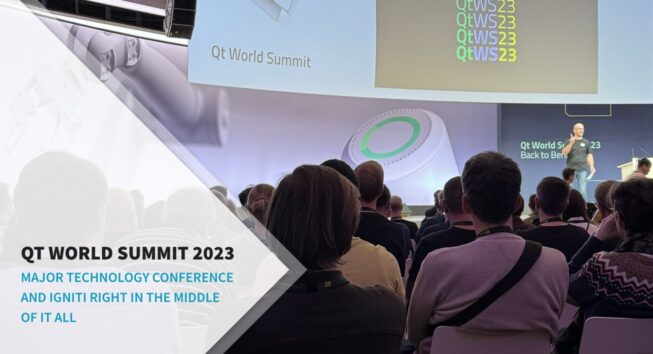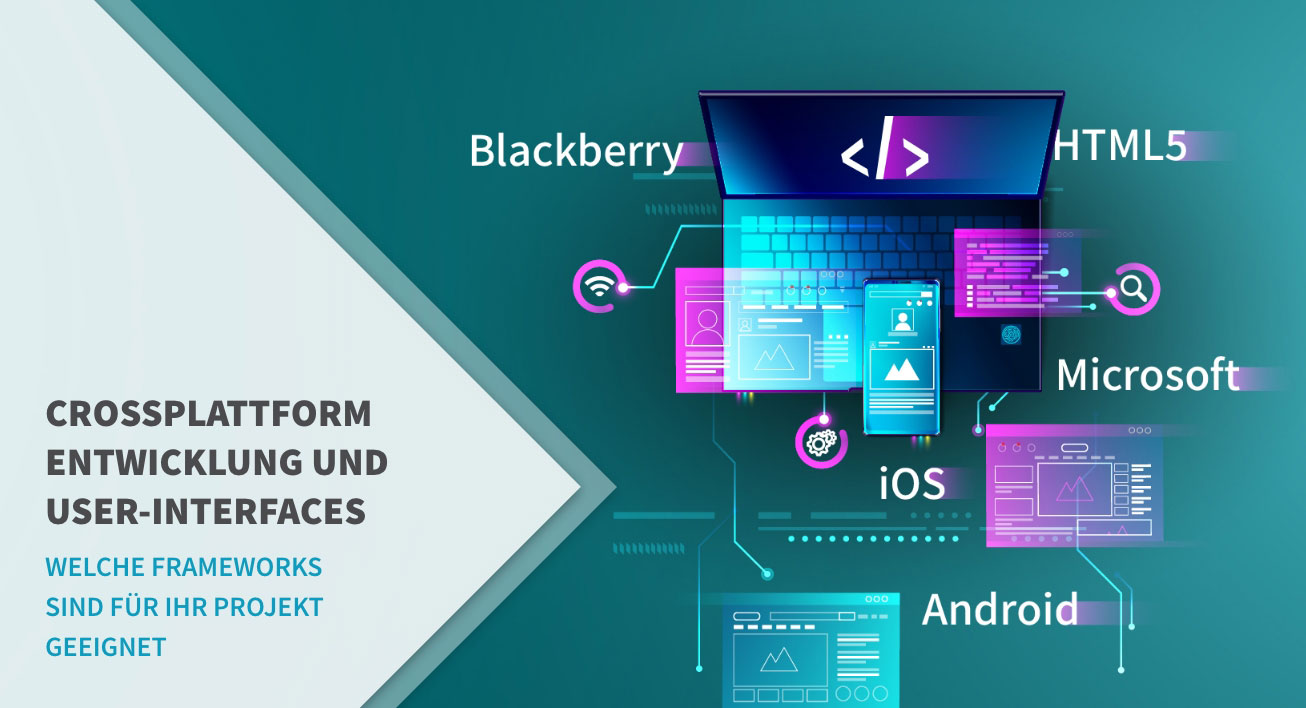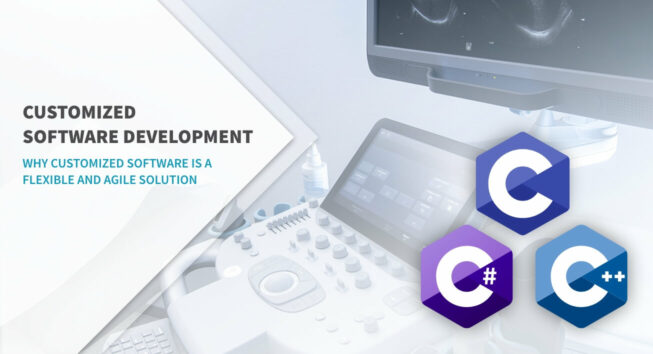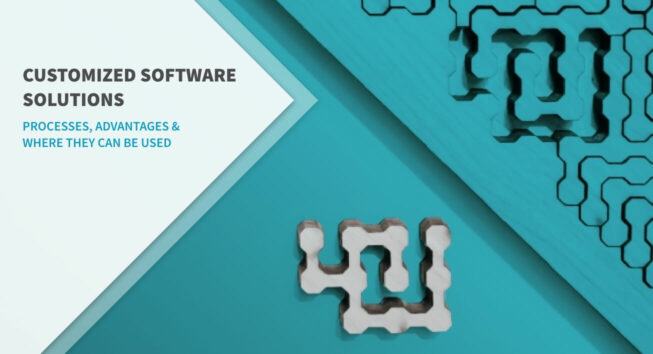
21. December 2023 von Vanessa Schröter
Software



WHICH FRAMEWORKS ARE SUITABLE FOR YOUR PROJECT
published at 28.06.2022 from Tom Buschbeck
The first impression of a web application and device applications is enormously important for a positive user experience. It determines whether your users will find the app intuitive and easy to use and whether they will continue to use it. Of course, the user interface (UI) has a major influence. Especially in cross-platform development, it is therefore a decisive factor whether the UX design is implemented equally well on all devices. To support this, there are framework solutions that facilitate the development of a cross-platform app.
In this article, we will shed light on why cross-platform orientation is crucial for the success of an app or software application and how certain frameworks can help you achieve this.
If you are looking for a suitable solution to implement an application software for different target systems, we will show you how frameworks for cross platform development can directly support you. As experts, we look together at the most important factors and two of the most well-known frameworks (Qt and .NET) that we have used as a solution for various projects and that can also help you.

A framework is a structural framework for software development. At the same time, a framework is a collection of tools and applications with ready-made functions (features) in the form of code snippets and rules. These simplify development and provide a kind of basic framework that can help to implement software development projects more productively. These are often flexible templates in the form of defined project structures for specific areas of application. Most frameworks are geared towards a specific technology or established programming language (e.g. JavaScript in React Native).
Since many structures and elements are already preset in the framework, recurring tasks can be processed more quickly. Once created, the prefabricated elements can be reused or adapted very easily. In addition, there are standardised interfaces in the framework that are compatible with various sources, which makes communication with the sources easier and more error-free. Developers can thus save time and effort, as the existing structures are used and certain elements do not have to be rewritten again and again.
The use of a platform-independent framework can also have disadvantages. The product quality of the software is strongly dependent on the quality of the framework. If there are changes in the native operating systems, these may have to be modified or adopted in the framework. There are also restrictions on the design freedom of the user interface. This is a disadvantage if you are aiming for a completely independent design. However, an individual design is then still possible in a roundabout way.

Cross platform development is the cross-platform creation of an application (device application or web application) for different operating systems. Web browsers are regarded as a separate system platform. Sometimes the term multi-platform development is also used.
Cross-platform capability thus describes software that runs on different platforms and operating systems, e.g. Android, iOS, Windows, etc. The software applications that are realised with such technology do not fundamentally require separate platform coding. Instead, a unique cross-platform coding creates the basis for the app to run as efficiently as possible on all systems. This contrasts with native app development for customised applications. Native apps are therefore applications on mobile devices that have been designed and created specifically for the operating system of the respective device.
Cross-platform frameworks, in turn, are the tools used by developers to create apps for different devices (and systems). Unlike native development, cross-platform frameworks allow developers to create software with one-time coding and run it on all operating systems. This only requires minor changes, which can save a lot of time and development costs.
We don’t need a long analysis to understand that every software provider needs a larger user base to potentially generate more revenue. For that, in today’s rapidly evolving technology world, you need cross-platform software (app) at best. The reason is simple: by developing a cross-platform app, your product can reach a larger audience in a cost-effective way.
There are now a large number of frameworks for cross-platform development and the associated tools, whereby the boundaries between the technologies are becoming increasingly blurred. Different frameworks usually have different orientations and are suitable for specific application purposes. These include, for example, domain frameworks, application frameworks, test frameworks or web frameworks.
There are many overlaps here, whereby frameworks for cross-platform development in the area of app frameworks unite and bring together many things. We present two of the best-known representatives, Qt and .NET, in more detail.
Popular cross-platform frameworks for graphical user interfaces:
At the end of last year, Microsoft released .NET 6, the latest version of the widely used framework – one of the largest rollouts in the company’s history. The release is the conclusion of the unification of the framework and the tools associated with it. The very large eco-system of this technology fundamentally ensures high productivity and flexibility. Connected to this is a large user community with very comprehensive documentation as well as support for potential problems and approaches to solutions.
With the release of .NET 6, a uniform platform and view for cloud-based, desktop, web, mobile and IoT applications is emerging. This is already the essential step towards cross-platform functionality for the entire framework. The written code can also be used here on all platforms without major changes.
The “Multi-Platform App User Interface” (MAUI) is one of the latest features in the .NET cosmos. It is based on Xamarin, which used to be Microsoft’s technology for mobile development. It enables the cross-platform creation of apps with only one source code. Abstractions to native platform APIs are handled in a platform-neutral way. In the past, it was already possible to develop applications for all operating systems with the help of C#, regardless of whether mobile operating systems such as iOS and Android or Windows, macOS and Linux. In addition, with .NET 6, all applications can take place in a single project. Projects no longer have to be created individually and then configured.
The changeover from Xamarin to MAUI is very easy for developers and UI designers – because in fact hardly anything changes in the daily work routine. UI and business logic, for example, can be transferred directly; only the so-called “platform renderers” differ and have to be adapted. These are used to define the peculiarity of a UI component for a particular operating system.
With the connected framework solution Blazor, it will still be possible to develop web applications from server to frontend – but from now on with .NET 6. Web developers are thus no longer far away from being able to publish their applications on the desktop or app market. This is because the business logic written in C# and supported by the .NET 6 framework can be reused in MAUI in exactly the same way.
When it comes to cross-platform development and user interfaces, Qt is one of the most well-known and popular technologies. Qt is an application framework and GUI toolkit that enables cross-platform development of applications and graphical user interfaces. The framework is open source and multi-licensed. It offers its users database functions and XML support and runs on almost all operating systems and graphics platforms.
Because of these features, Qt also has a very large community (about 1.5 million users) and thanks to the eco-system there is always a tool, features or modules as well as documentation for certain and specific software solutions.
Key benefits and core services of Qt:
Since only a few applications based on Qt use the full range of functions, the framework has been divided into modules that can be freely assembled. This ensures a lot of flexibility for developers. Qt-UI is one of the most important modules for the development of graphical user interfaces. Parallel to the development of user interfaces, many core components are available at the same time. With QML, Qt has its own programming language as a framework. Its own mark-up language provides many simplifications in the development of user interfaces. Qt 6 is the latest version, for which various updates have already been released.
Which framework is suitable for development must be decided from project to project. If, for example, the application is to use certain UI elements as standard, does not contain individualised menu animations or special design wishes, Qt, .NET, MAUI & Co. will save a lot of effort. In some projects, where she wants to keep full control over all aspects of the user interface, the detours you have with frameworks are sometimes as long as the creation of native code. You can find out whether the use of a cross-platform framework is worthwhile for your project in a consultation with our experts.

about the author
Tom Buschbeck
Tom hat an der Technischen Universität Ilmenau seinen Bachelor in Ingenieurinformatik absolviert, und praktische Erfahrungen in diversen Softwareunternehmen gesammelt, bevor er 2015 zur igniti kam und zunächst als Softwareentwickler für C++ den Bereich mit aufgebaut hat. Als Head of Digital Solutions kümmerte er sich bis 2023 um sämtliche Bereiche im Unternehmen, um diese weiter voran zu bringen.

21. December 2023 von Vanessa Schröter
Software
31. August 2022 von Tom Buschbeck
Software
18. August 2022 von Tom Buschbeck
SoftwareLet us start!